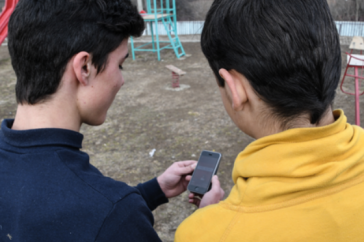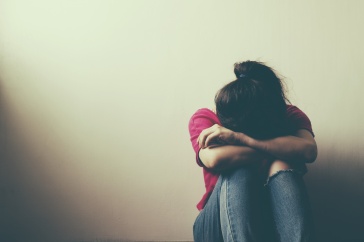
New research led by UNH professor of sociology David Finkelhor, director of the Crimes Against Children Research Center, looked at rates of child abuse in youth organizations.
Child abuse at the hands of Scout leaders, priests or coaches is far less common than abuse of children or adolescents by family members or other adults. That’s the primary finding of new research from UNH professor of sociology David Finkelhor, contradicting media-fueled notions of organizations that serve youth being hotbeds of abuse.
“Youth-serving organizations did not appear to be high-risk settings for kids. They were lower than other environments that kids were operating in,” says Finkelhor of the study, published earlier this month in JAMA Pediatrics.
Finkelhor and his coauthors, including Crimes Against Children Research Center colleagues researcher Anne Shattuck and professor of sociology Heather Turner, combined data from three national population telephone surveys to create a sample of 13,052 children from infants up to age 17 to calculate prevalence rates for youth-serving organization (YSO) abuse and compare them with family and other nonfamily, non-YSO abuse.
Among the 13,052 children and adolescents, the proportion exposed to any type of YSO maltreatment was 0.8 percent during their lifetime and 0.4 percent in the past year. That’s compared with a rate of abuse by any family adult of 11.4 percent during a lifetime and 5.9 percent in the past year. The rate of abuse by another adult who wasn’t family and wasn’t from a YSO was 5.9 percent during a lifetime and 3.3 percent in the past year, according to the results.
“This analysis suggests that maltreatment of children and youth in YSOs is a problem but not nearly as much as maltreatment in the family,” Finkelhor says, adding that much more work is needed to prevent abuse and improve children’s safety in YSOs. “But at the same time, I don’t think the work should prompt people to deprive kids of the opportunities these organizations provide. And we need to remember that we need to do something about abuse in general, in particular in the family, because that’s where so much of it occurs.”
A second major finding, Finkelhor says, was the high rate of emotional maltreatment reported. Most of the YSO maltreatment, 63.2 percent, was verbal abuse and 6.4 percent was any form of sexual violence or assault. Physical abuse was reported by 34.6 percent of YSO abuse survivors and 0.8 percent reported neglect, the results show.
“The reality is that a lot of kids have had teachers or camp counselors who belittled them, threatened them in various ways, made fun of them because of disabilities or habits that they had, played tricks on them that were cruel,” he says. “Sexual abuse gets the most attention, but emotional maltreatment is one we should be paying more attention to.”
While Finkelhor and the Crimes Against Children Research Center he leads at UNH have produced robust research that shows that family members are far more likely to abuse children than random and violent strangers, he acknowledges their work has not countered the public perception of “stranger danger.” In recent weeks, he’s taken to the op-ed pages of The Washington Post and the airwaves of NPR’s Diane Rehm Show to bring this data-based perspective to the recent killing of a teenage girl allegedly by someone she met online.
“I do think that the struggle in our field is that news stories and tragic cases really strongly affect peoples’ perceptions and policymakers’ agendas,” he says. “So the constant challenge is to have some social science information that can be a counterweight to peoples’ inclinations to jump on the bandwagon about some particular issue or concern or idea.”
This project was supported by the Office of Juvenile Justice and Delinquency Prevention, Office of Justice Programs, US Department of Justice. Read the full study.
-
Written By:
Beth Potier | UNH Marketing | beth.potier@unh.edu | 2-1566




















































